January marks the start of a new school year so LET’S LEARN ABOUT…stationery from the past! As students prepare for school again, we go back in time to look at various items from study spaces in the past.
About 1,500 years ago in China, the four basic tools for writing – brush, ink, paper, and inkstone – were already known as the Four Treasures of the Study.
Likewise, calligraphy has been a prized skill in the Arabian Peninsula for over a thousand years, and people paid attention to the tools used in calligraphy.
While some stationery items were beautifully designed and made, others were simpler and more plain. Whatever their design, many of these writing instruments served important functions in the study, and many artistic and cultural works have been created using them.
LET'S LOOK AT SOME OF THE STATIONERY FROM OUR GALLERIES
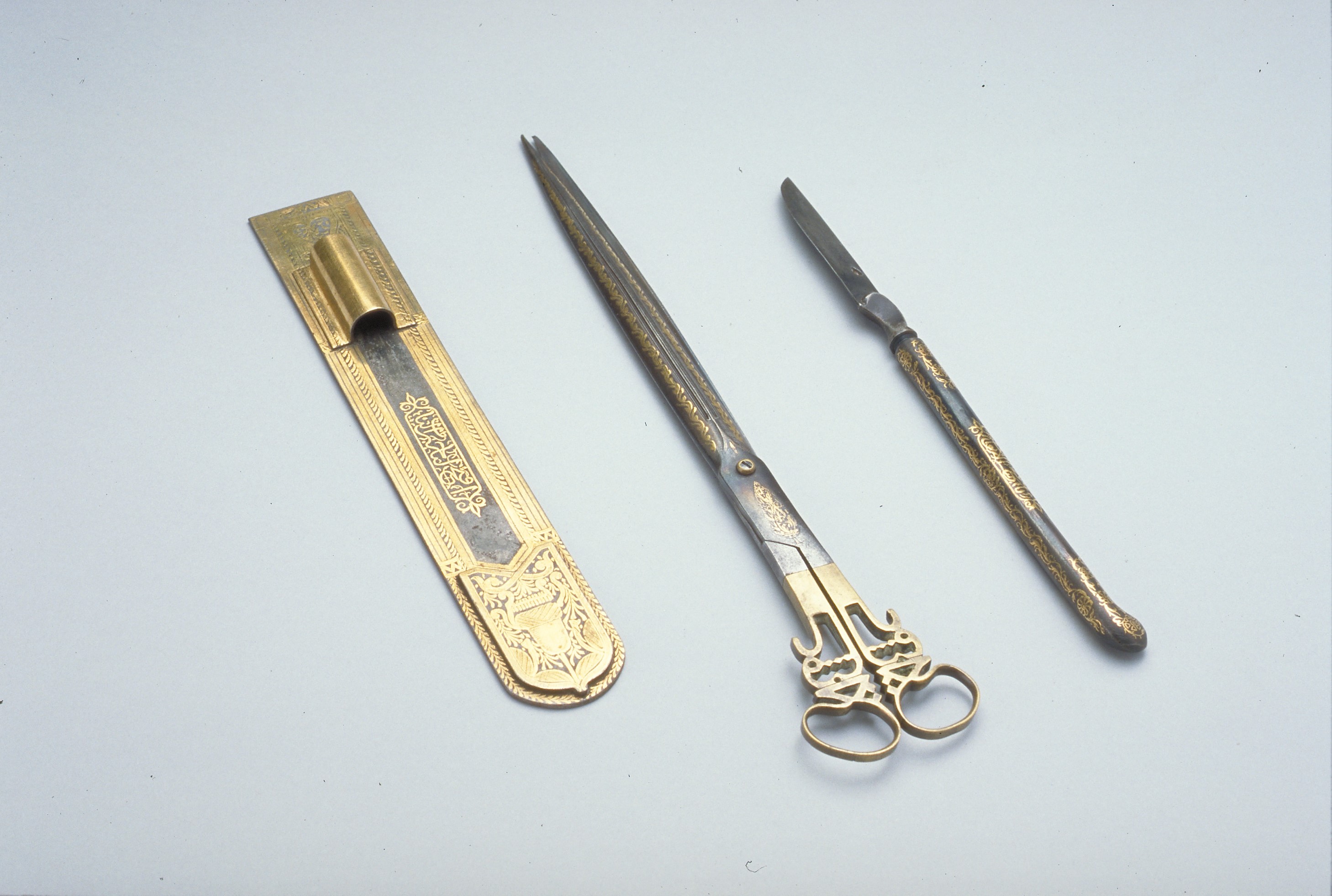 |
|
Calligraphic tools
Ottoman Turkey, 19th century
Steel (damascened), gold
1997-04824-001 to -003
|
From the left to the right are a pen rest, a pair of scissors, and a knife. These tools were used by scribes in Turkey over 200 years ago. The scissors would have been used to cut paper, and the knife to trim the reed pen. Scribes cut the pen nib at a variety of angles in order to achieve different calligraphic styles. The handles of the scissors are shaped in calligraphic Arabic letters.
Look at the colours and can you see how the steel is inlaid with gold decoration? You can find these in our Islamic Art Gallery.
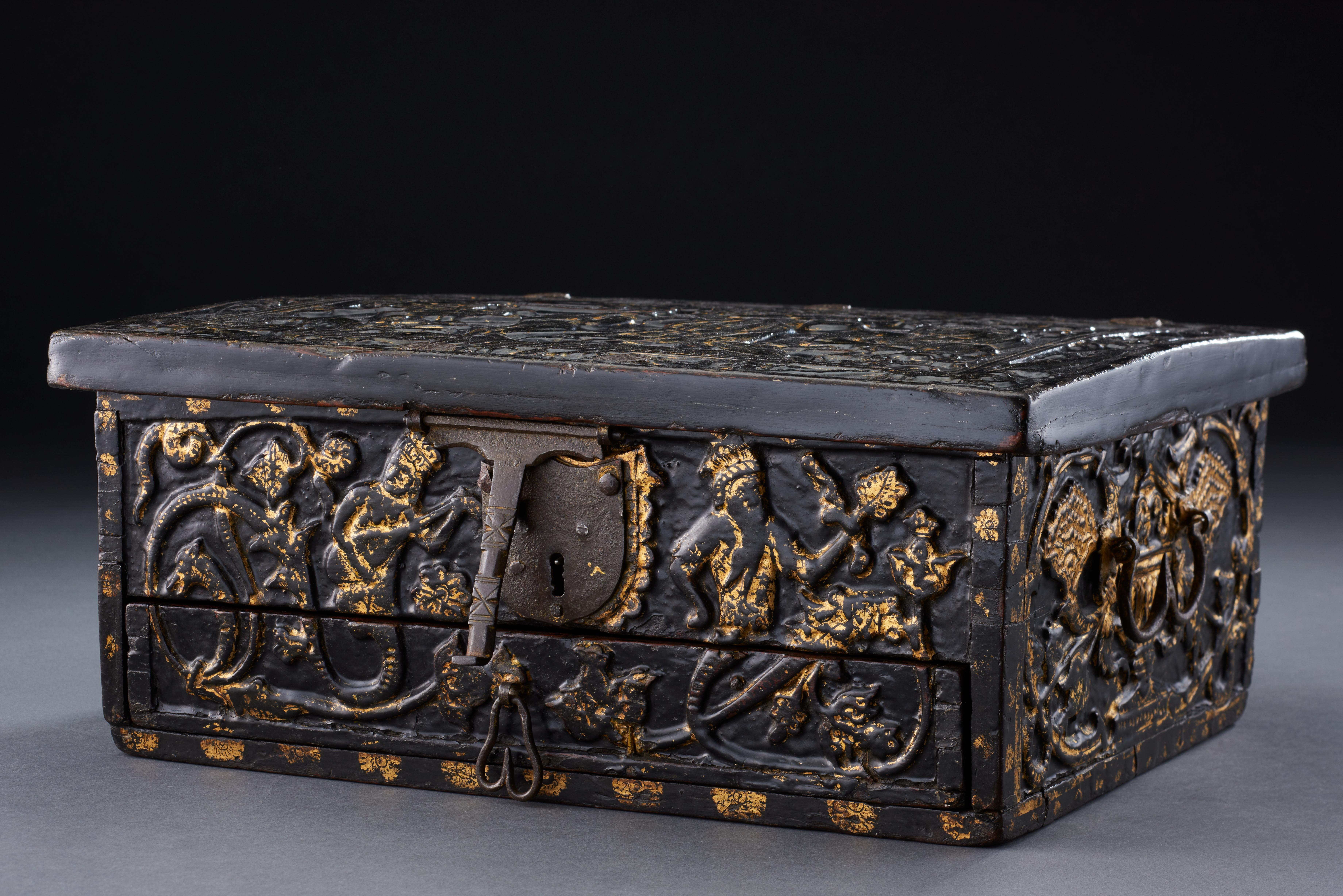 |
|
Writing box
India, Bay of Bengal or Kochi, 16th century
Lacquered and gilded wood, iron
2011-01517
|
How does this writing box compare with the pencil case you bring to school? What stationery do you think would be put into this box?
Writing boxes like this one are one of the oldest types of decorative arts made in India for the Portuguese market. This one is made of wood, with details carved and then covered with a layer of lacquer. Gold was then added to make figures stand out, and to make the box more luxurious.
The designs include figures, leaves, mythical creatures, and a coats of arms. You can find this wooden box in our Court and Company Gallery.
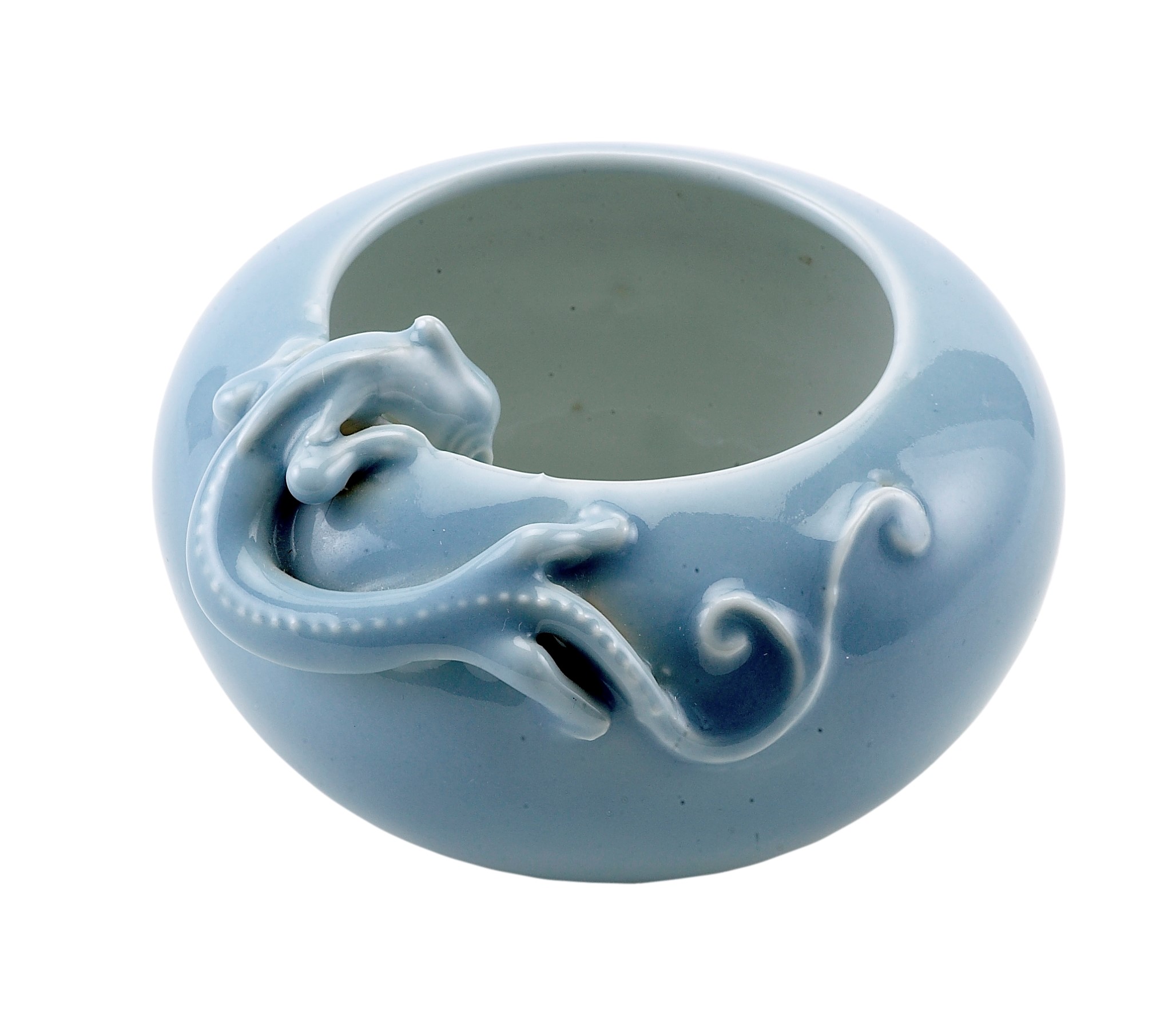 |
|
Water pot with dragon (影青螭龙纹水丞)
China, Qing dynasty (1644–1911)
Porcelain
On loan from Dr Yuan Shao Liang
|
Water pots are small vessels used to contain water and can be found on a Chinese scholar’s desk. When preparing ink for painting or writing, water is first dropped in small amounts onto the surface of an inkstone. Then, an inkstick is ground on the stone and mixed with the water to form liquid ink.
Water pots come in various shapes and sizes. Those with larger openings – such as this one from China – could be used as brush washers too, to wash the ink off the brush hair.
The potter has added a playful touch to the design of this water dropper – do you notice the tiny four-legged Chinese dragon peeking into the bowl? Perhaps he is returning to his watery home. See this object at our new exhibition thINK: Chinese Calligraphy, Connoisseurship & Collecting in the Contemporary Gallery.
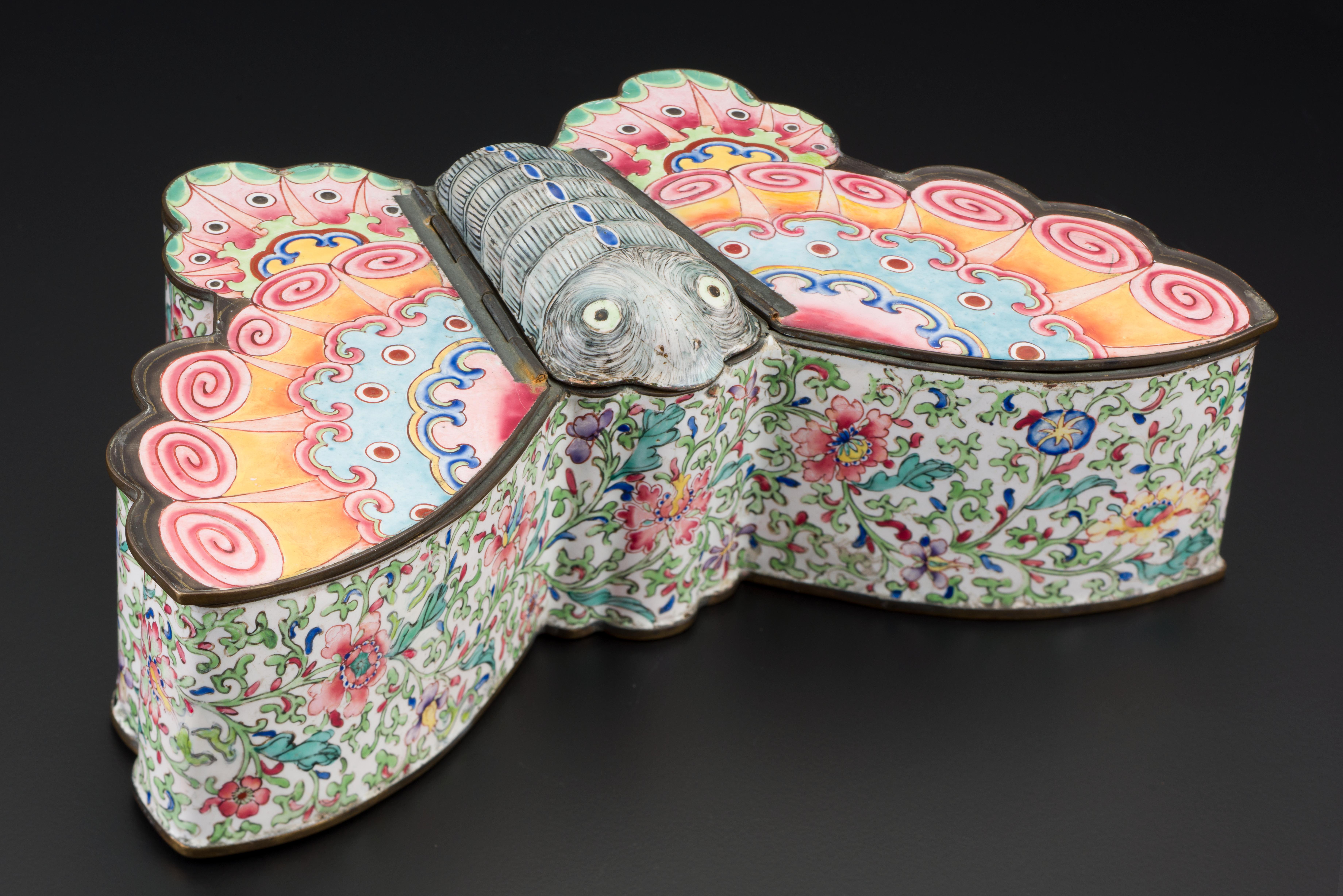 |
|
Butterfly-shaped inkwell
China, Guangzhou, 18th century
Painted enamel on copper
2016-00465
|
This metal box in the shape of a butterfly has a special function: it's an inkwell. Removable containers to hold ink are inside. This was made in China about 300 years ago, probably to appeal to European customers.
Look at the vibrant colours – does it look like a real butterfly? In Chinese culture, butterflies symbolise joy and a happy marriage. This inkwell can be found in our Maritime Trade Gallery.
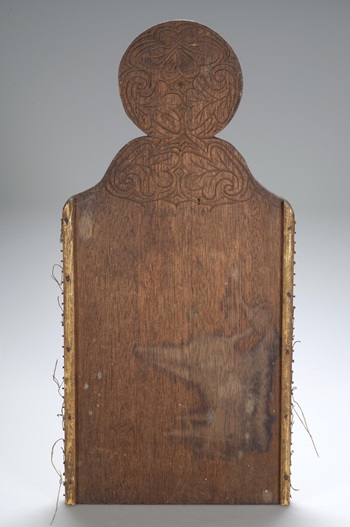 |
|
Ruling board
Malay Peninsula, Perak, Bidor, early 20th century
Wood, 51.4 x 24.1 cm
XXXX-11248
|
Can you guess what this large wooden board was used for? It looks quite different from the rulers we have today, but it had a similar use – to mark straight lines on writing paper. Twenty-six threads would be stretched horizontally across the board, tightened by twisting the thread around nail heads driven into the sides of the board. Can you see the broken threads left on this board, which is about 100 years old?
The spacing between the rows is slightly more than one centimetre. A blank piece of paper would have been pressed to this board to make parallel line markings. This would give straight and even rows for writing on the paper.
SOME NEW WORDS TO LEARN
| Function |
Purpose; use. |
| Calligraphy |
The art of beautiful writing. |
| Scribes |
People who copied documents by hand. |
| Nib |
Pointed end of the pen where the ink flows out. |
| Lacquer |
Lacquer is made from the sap of various trees. It is painted in many layers onto the surface of objects like wooden boxes to make them more durable and look glossy. |
CREATE
Draw up a list of resolutions you hope to keep in the coming year and decorate it. Remember to hang it up somewhere visible to remind yourself. Tag us @ACM_SG #LearningatACM for a chance to get your creation featured.
EXPLORE
Head to NHB’s one-stop heritage portal Roots.sg to read more about the objects featured:
Calligraphic tools
Writing box
Butterfly-shaped inkwell
Ruling board
New exhibition at ACM
If you'd like to find out more about the Four Treasures of the Study from the Ming and Qing periods in China, visit our new exhibition thINK: Chinese Calligraphy, Connoisseurship & Collecting at the Contemporary Gallery on Level 1, from 23 December 2020 to 25 April 2021. Click here.
Want more of these resources? Come back to learn new things every month.
Missed a monthly post? Not to worry, we keep past topics here for you.
What else would you like to learn about? Tell us here.
There’s more!
Check out other videos and download e-resources inspired by the objects in ACM’s collection.